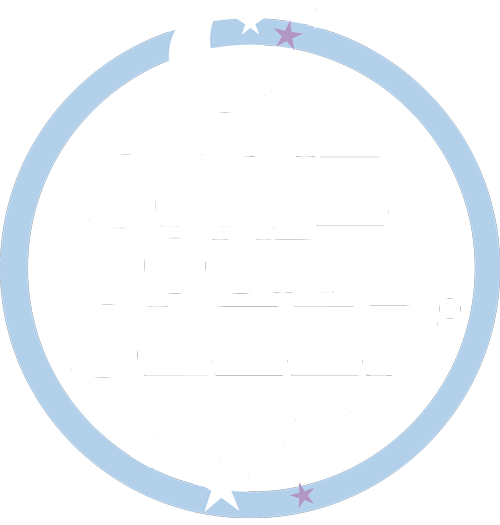How do you know if your baby is suffering from Colic or Reflux? Let’s look at the difference between Colic and Reflux below and the best way to treat them both.
Colic
Although much research on colic has been conducted, scientists have not been able to conclusively define it or to prove that there is indeed a condition.
When I talk about colic, I am using it as a term to describe a pattern of unsettled behaviour and continuous crying in some babies in the first few months of their life. Statistically, colic seems to occur in about one in every five babies and is equally common in breastfed and formula-fed babies.
I believe putting babies into a structured routine can counter the effect of colic and, if the routine is followed correctly, within 24 hours the crying often disappears.
Parents who contact me for help with their ‘colicky’ babies describe how the baby screams for hours at a time, usually in the evening. They also describe how their baby keeps bringing up their legs, as if in pain. I explain to them that I believe colic is often caused by the way we feed and wind our babies.
Imagine the stomach in six parts and picture it after each feed. Start from when your baby has had the longest sleep in a 24-hour period, say from 1 am until 6 am. At 6 am your baby has the first feed of the day. You wind your baby a few times during this feed, but not enough, although you may not realise this as you have heard a couple of big burps. Now imagine the baby’s stomach is one-sixth wind and five-sixths milk.
You settle the baby and all seems fine. At the next feed the same thing happens, but this time the stomach is two-sixths wind and four-sixths milk. And so on until the sixth feed. The baby’s brain is telling her she is hungry but with her stomach five-sixths wind, she only has one-sixth left for food. You try feeding your hungry, crying baby but, after a minute, she can’t fit any more food in. Consequently, the screaming starts for two reasons – first, hunger and second, the build-up of wind.
How to help relieve Colic
Taking the baby off the breast every three minutes or off the bottle every 30 ml to wind her may take a few minutes (and, if your baby is hungry, may result in some screaming), but a few minutes of crying while winding is better than a few hours later on. I advise parents not to feed the baby again until they get a burp up and to increase the time they allow the baby to feed between winding by a little each day. But if they see that the colic returns, they need to wind more frequently again.
Another common factor in the colicky babies I see is that they are demand-fed. Feeding this way all too often leads to the baby having another feed before the first one has been fully digested.
My mantra again: babies need a structured routine.
GASTRO-OESOPHAGEAL REFLUX
The term ‘reflux’ is popping up more and more often and seems to be replacing ‘colic’ as the buzzword used to describe the common scenario of a baby screaming for hours at a time, usually in the evening. First of all, let me say that reflux does occur in babies, and in all human beings for that matter.
The word itself is defined in the Oxford Dictionary as simply ‘backward flow’, so in relation to the infant human gastro- intestinal system it generally refers to the backward flow of food from the stomach. Sometimes reflux can be irritating to the oesophagus and baby will communicate this discomfort to parents in the only manner it knows – crying.
Genuine reflux can be caused by a number of things, including a dairy allergy or some other form of sensitivity, and should be treated if it persists, but it is my experience that often there is an easier way. Usually, by simply introducing a good routine, you can treat some supposed cases of reflux.
Often shortened to reflux, this condition affects many babies but frequently goes undiagnosed. Essentially, it is when the baby has a weaker sphincter muscle at the top of the stomach. The muscle is supposed to let food in but not let it back out of the stomach, but when it is weak it allows the contents of the stomach to go back up into the baby’s oesophagus.
All babies are born with a weak sphincter muscle and many experience posseting (little vomits) as a result. This is perfectly normal and nothing to worry about if the baby seems to remain happy and is putting on weight. Other babies however become very uncomfortable as they can experience very painful burps and suffer in the way an adult would with acid heartburn.
As with colic, I believe the cause of reflux is often the way babies are fed and winded. If a baby is not burped completely after each feed, wind builds up in the stomach and creates a bubble that further feeding won’t replace. If part of this gaseous bubble gurgles its way out it will often bring liquid contents with it. In such situations, each feed introduces less milk and adds a little more wind to the bubble as the day progresses.
Even when you get a good burp or two up after each feed, if it doesn’t all come out it will diminish the available room for additional food. By the end of the day, it may only take a minute before your hungry, crying baby can’t fit any more food in. The bubble of gas is taking up most of the available stomach space and the screaming starts for two reasons – first, the baby is hungry and second, the build- up of wind is uncomfortable.
How to help Reflux
Often all the baby needs is a defined and proven feeding and sleeping routine with plenty of attention to burping during and after the bottle or breast (every three minutes if breastfeeding or every 30 ml, if bottle- feeding). Sometimes the burping takes a few minutes, upsetting an already hungry baby further, but most parents agree that a few minutes of crying while winding is better than hours later. Do not continue feeding the baby until you get a burp up or you are sure there is not one left to get up.
Not all babies experience the same symptoms with reflux, some- times making it difficult to diagnose. In some cases the baby suffers from the acid heartburn but also brings up a little or a lot of the milk (posseting) after a feed. In other cases, the reflux is ‘silent’ and is harder to diagnose because there is no posseting with the burps.
When to see a doctor
In very serious cases, the bottom part of the oesophagus becomes inflamed and if left untreated, inflammation and ulcers in the oesophagus can cause scarring. This can then lead to the baby experiencing difficulty swallowing.
Babies suffering from this condition are often difficult to feed, constantly arching their backs and screaming during and after a feed.
If you think your baby may have a form of reflux you should talk to your GP. Most babies with reflux will have stopped suffering by their first birthday and very few need major intervention by the medical profession.
Things to help a baby suffering from reflux
- Try to keep a reflux baby upright during a feed as gravity helps prevent regurgitation.
- Burp your baby often during a feed.
- Try to avoid lifting your baby’s legs up while changing her nappy. Roll her onto her side instead.
- If your baby is over eight weeks, do not feed her more than every four hours.
- DO NOT ever prop the cot or mattress up because this is dangerous as your baby might slip down under his bedding which will increase the risk of SIDS or SUDI. In the past, health professionals, including myself, advised parents to tilt the cot or mattress up but this is now never recommended. According to SIDS researchers, there is no evidence to suggest that elevating the mattress will assist with reflux for a back- sleeping baby. Placing a pillow in the cot or elevating the cot or mattress increases the likelihood of a baby slipping down under the mattress, pillow or bedding and the bedding covering your baby’s head.
Medications can also help but must be prescribed by a doctor.




